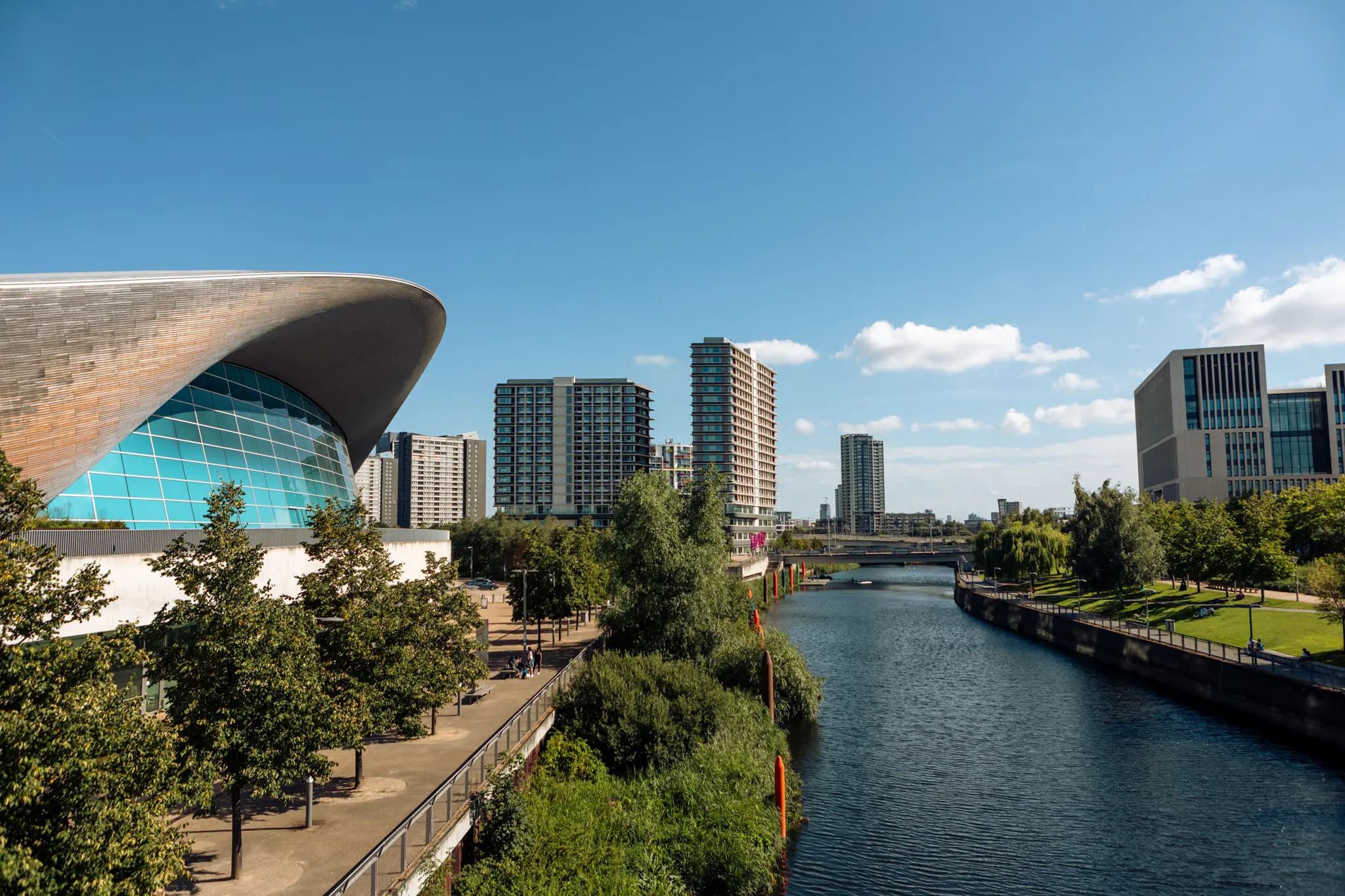The History of Stratford London
How did Stratford, London get its name? What was Stratford known for before the Olympic Park? What did Stratford look like before its modern-day regeneration? Where are Stratford, London’s points of interest? Look no further – here are all the key facts about Stratford.
- 14 Mar 2024
Stratford lay next to a ford on the Roman road from Colchester to London. In the Domesday Book, an extensive land survey from 1086, the area we know as Stratford was called ‘Straet Forda’ meaning “ford on a Roman Road”. The small river (ford) was a little North of where the High Street is today.
‘Straet Forda’ literally means ‘ford on the Roman road’, and if you google ‘Straet Forda’ today, you’ll still get search results for Stratford, East London. “Did you mean: Stratford?” Yes, we did!
Of course we now know the area for the London 2012 Olympic Games and the Queen Elizabeth Olympic Park, but what is the less-than-recent history of Stratford?
Stratford Langthorne Abbey (sometimes referred to as West Ham Abbey) plays a huge part in the history of Stratford. It was founded in 1135 and was one of the largest and wealthiest abbeys in England for the period. At the same time, Stratford was a booming community for potato farmers, brewers, and weavers. The district, however, pretty much kept to itself.
The abbey was dissolved by King Henry VIII in 1538, but during the next couple of centuries Stratfords maintained its reputation for sending good produce to London and it also became a desirable area for wealthy merchants and bankers within an easy ride of the City.
The arrival of new transport links and the nearby Royal Docks improved access to the outside world and brought the industrial revolution to Stratford. Though the area was initially slow to move from agriculture to one of industry, by the late 1880s, the West Ham area of Stratford had become a major manufacturing centre for pharmaceuticals, chemicals, and processed foods and it was known as the factory centre of the south of England.
The presence of the Royal Docks, the Stratford railway lands and other high value targets made the Borough of West Ham one of the areas of London worst affected by bombing during the Second World War. Like many areas of London, the later twentieth century saw a decline in prosperity for Stratford but the area remained an important transport hub and an ideal place for the siting of the London Olympics which means that Stratford is now connected to, well, everywhere!
With the creation of the borough of Newham in 1965, Stratford became the centre of local government for the area. Development continued during the late 20th century, and then thanks to the potential of the area was named home for the 2012 Olympic Village and stadiums. After the Olympic bid was won, the upward trajectory of regeneration commenced and has continued to this day with a buzzing cultural and educational quarter that is still growing!
The continued evolution of Stratford, from Theatre Royal Stratford East and Stratford East Picturehouse, to a new home for a variety of educational campuses, including University College East and the London College of Fashion, along with the forthcoming arrival of the V&A East and Sadler’s Wells East, makes it clear that Stratford is a thriving metropolitan area that continues to grow
Stratford’s twenty first century regeneration will see a place where impressive new residential developments mix with excellent sporting, educational and cultural facilities. The transformation of the lower Lea Valley and the birth of the Queen Elizabeth Olympic Park have contributed to placing Stratford firmly on the modern map. And now with Stratford Cross’s fantastic range of restaurants and bars, vibrant workspaces and cultural venues, Stratford looks set to be one of the most exciting neighbourhoods in London.
Want to discover how easy it is to get to Stratford and what to do when you get there? Visit our explore page here.
You can also download the Stratford Cross app and catch up with all things Stratford! The app is available on the App Store and the Google Play Store.
What's New

Gordon Ramsay Restaurants brings Bread Street Kitchen to Stratford Cross
Stratford Cross is excited to welcome the sixth London opening of Gordon Ramsay’s Bread Street Kitchen this summer.

Best walks in Stratford
Stroll through scenic wonders in Stratford! Explore its best walks, from tranquil riverside paths to historic streets.

Universities and higher education are on the move with Stratford a prime destination.
London consistently ranks as the world’s best place to study, however, for universities and colleges seeking to meet rising demand, city centre expansion options are limited.
